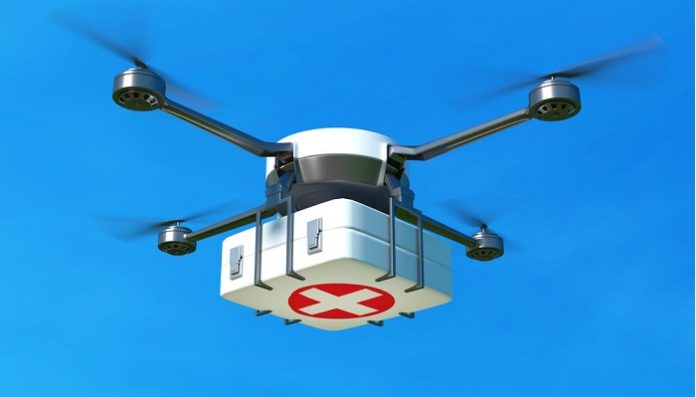The last couple of years have been stressful for any industry you talk about. That said, there is one sector which has proven to be starkly different, and that’s pharmaceuticals. The Indian spectrum in any industry sphere is worth a case study. There’s a fine scene of rapid techno-transformation and digitisation taking place, and then you have the hard-to-reach rural populace, which, leave alone the development, doesn’t even have access to primary or basic healthcare.
The idea of on-demand drone delivery is an innovation that not only is revolutionary but also paves the path for many young startups to build their technology lines that help it become more efficient, inexpensive, and valuable for all. When we say pharmaceuticals in particular, drone delivery is the latest trend picking up, but will it find that grip on the tarmac? That needs to be seen.
One such expert talking about drones and their technological superiority is TPC Packaging Australia’s Arnold George, who calls them exciting and a good technology to make use of and get into places. However, he counters his excitement with the fact that is drone technology in today’s India really required when every village is connected. The drones have a maximum capacity to travel around 150–200 kilometers, but whether there is enough air space available is what he points at. He calls it an issue, and a real one at that, when there are more drones in the air, with more accidents, all leading to more danger to human lives.
Add the environmental sustainability concerns to it, as they are made up of plastic and metal, and you will begin to think of EVs as being a better bet than drones in the years to come.
The Indian civil aviation ministry last year in July made updates to the drone rules when it comes to making corridors for them for cargo package deliveries. The announcement made by the ministry puts forth an increase in weight from 300 kg to 500 kg, which would cover taxis as well.
Director of Business Development at Softbox Systems, Pavan Kumar, says that if human perception and tangibility change in India, that’s when drones and robots will have to be brought in to work on their behalf. He believes that full-fledged drone delivery and the technology that supports it are ten years away, but not for immediate use.
Gurugram-based TechEagle, a startup drone company, recently collaborated with the Meghalaya government to carry out the country’s first e-VTOL drone delivery when it comes to lifesaving meds. The company also received approval from the south Indian state of Telangana in association with the World Economic Forum and NITI Ayog to deliver vaccines and medical supplies across the region.
Arnold George adds that, on a more futuristic note, the shelf life of a drone needs to be compared to that of an EV, thereby calculating the risk involved. Besides an apt implementation, he says, the thought of recycling the drone must be paid heed to. This year has already seen innumerable Omicron cases across India, which has further planted new challenges for the pharmaceutical industry to keep on time and consistent delivery of medicines and vaccines a top priority.
When we talk about delivery in any space, of any product, supply chain transparency and visibility have been significant drivers. The supply chain has undoubtedly seen unimaginable disruptions across the globe, and this element represents one of the major challenges that pharmaceuticals are facing today.
George adds that becoming a one-stop solution is all that one looks out to have. When it comes to the domestic point of sale, no one knows what temperature the medicine is being delivered at, and there isn’t any visibility in that regard. Education, as per him, is the most pivotal of all the other things that the domestic landscape must have.
Continuing with it, George maintains that in regions like Europe, Singapore, and the US, there is proper visibility maintained w.r.t product visibility, temperature, etc. till the time the drug reaches the drugstore. All that the buyers have to do is scan the QR code to get to know the temperature that is maintained post-manufacturing of the drug. This is the level of visibility that is witnessed across the developed nations, but for a country like India to get to that level, some kind of education will be required. In 2022, it is expected that Pharma Logistics will be home to many improvements and upgrades. As per Sanjay Sharma, Vice President of Coldman Logistics, imports and exports may play a significant role in the pharmaceutical logistics spectrum. India’s exports have increased by 18%, which will aid in the growth of air and sea trade. There is some traction seen in warehouses domestically as well. Sharma adds that there are many pharmaceutical companies evolving and focusing on upscaling their quality infrastructure and, at the same time, getting hold of quality assurance services. The infrastructure space, as of now, happens to be price-driven and also lacks the quality and upkeep standards that are required. Now is the time for the existing infrastructure to be shifted to modern warehouses that in turn offer efficient and safe handling, better flexibility, and proper optimisation of the vertical space.
Coldman has already started to see a demand when it comes to warehousing requirements and also the trend in micro delivery. This has prompted them to focus on the BTS project and customise it as per client and temperature requirements.
Pavan Kumar from Softbox Systems adds that the last two years have seen pharmaceutical logistics struggling, especially in the cold chain arena. Air freight rates have added some stress already, and if things come back to normal this year, one can surely be optimistic about air and sea freight logistic challenges getting resolved. Innovations, especially in the logistic sector, are what everyone wants to have and even strives for. Everybody in the supply chain, from manufacturers to producers, distributors, and forwarders, is looking to get on the same page and thereby work towards better supply chain management as well as smooth logistics.
Arnold George says that there are three segments where he thinks signs are positive. The growth of the warehousing sector in India, the growth of the logistic companies and the emphasis on controlling temperature. Reefer vehicles have already witnessed a 15% constant growth in India, which, according to him, is a positive side. Finally, the traditional use of packaging is what should be upgraded by education.





















